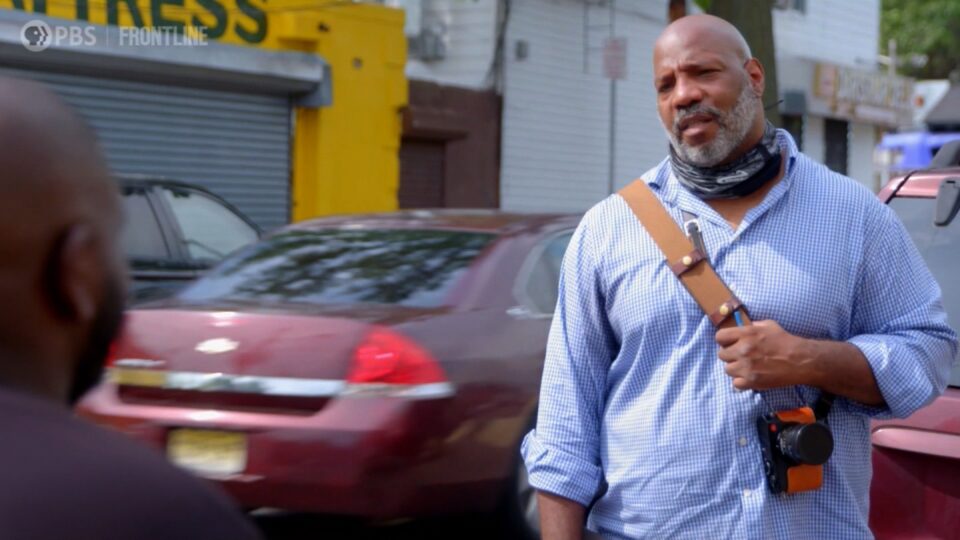Will ‘Shape the Future of Journalism Education’
An ‘Inspired’ Caldwell Leaves Hampton U., Has Plans
From May 11:
Shots Kill Palestinian American Journalist
Al Jazeera Reporter Was on West Bank
Scant Coverage for Trapped African Miners
Nieman Announces Diverse Class for 2023
60 Ukrainians Apply for Hampton’s Free Summer
Homepage photo: Jelani Cobb discusses Newark’s police reforms and his updated PBS “Frontline” documentary “Policing the Police 2020”
Support Journal-isms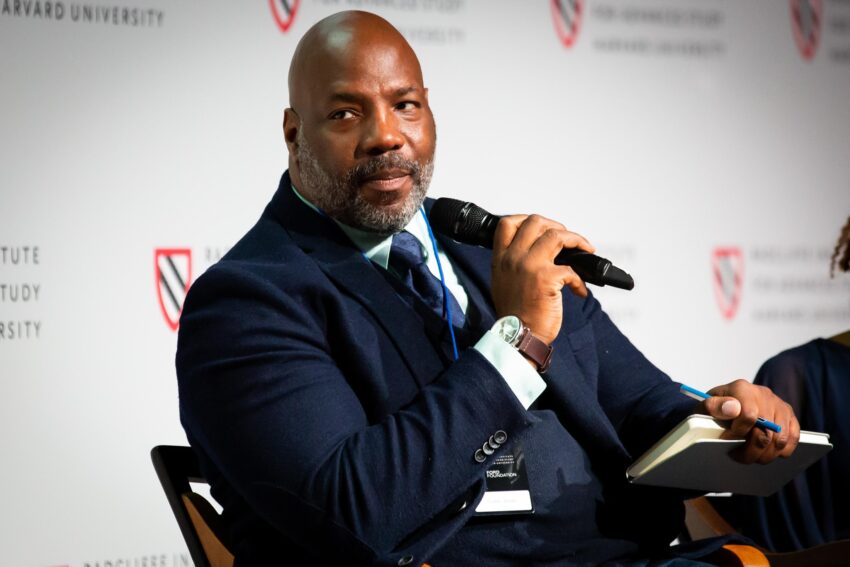
Will ‘Shape the Future of Journalism Education’
Jelani Cobb, a thought leader, journalist and historian, was appointed dean of Columbia Journalism School Friday, Lee Bollinger, the school’s president announced.
Cobb joins a tiny but growing number of African Americans leading majority-white journalism schools, including Charles Whitaker at the Medill School at Northwestern University, named in 2019, L. Battinto Batts, named last year at the Walter Cronkite School of Journalism and Mass Communication, Arizona State University; Sam Fulwood III, dean of the American University School of Communication also named last year, and Kathleen McElroy, director of the School of Journalism at The University of Texas at Austin, named in 2018 .
Bollinger’s announcement reads, in part:
“Professor Cobb is the Ira A. Lipman Professor of Journalism and Director of the Ira A. Lipman Center for Journalism and Civil and Human Rights.
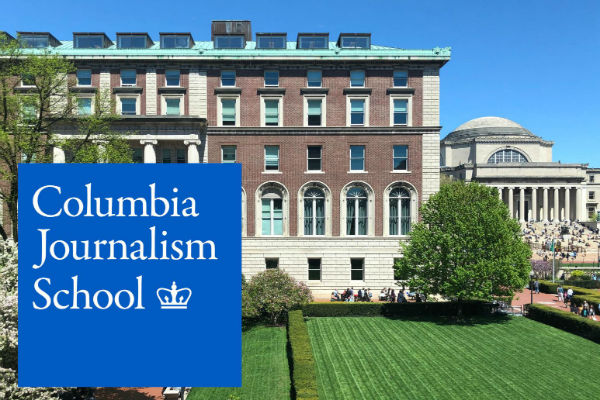 “Jelani is a highly distinguished and renowned journalist and historian. Since 2012, he has worked for The New Yorker, as a contributor and currently as a staff writer, offering in-depth analyses of a wide array of subjects, ranging from electoral politics and policing to filmmaking and stand-up comedy. He has authored books on the election of President Barack Obama and the history of hip hop, and he recently co-edited an anthology of portraits of Black life in America.
“Jelani is a highly distinguished and renowned journalist and historian. Since 2012, he has worked for The New Yorker, as a contributor and currently as a staff writer, offering in-depth analyses of a wide array of subjects, ranging from electoral politics and policing to filmmaking and stand-up comedy. He has authored books on the election of President Barack Obama and the history of hip hop, and he recently co-edited an anthology of portraits of Black life in America.
“His essays and opinions have been published in The Washington Post, The New Republic, Essence, Vibe, The Progressive, and TheRoot.com. Jelani’s expansive resume also includes reporting for “Whose Vote Counts,” the Peabody Award winning documentary series with Columbia colleague June Cross, from PBS FRONTLINE, Columbia Journalism Investigations, and USA Today.
“We have been fortunate to count Jelani as a member of our University community since 2016. He and his colleagues at the Ira A. Lipman Center for Journalism and Civil and Human Rights convene experts and support journalists from diverse backgrounds to ensure that stories on these critical issues are covered with the care and rigor they deserve.
“Among the courses Jelani teaches is the seminar ‘Covering Race,’ which examines the influence of race in the United States and its effects on reporting and media coverage. Jelani graduated from Howard University and received his PhD in American History from Rutgers University. He is the recipient of fellowships from the Fulbright and Ford Foundations and in 2015 was honored with the Sidney Hillman Award for Opinion and Analysis Journalism.
“Jelani’s vision for the future of the Journalism School is one that embraces the vital role of journalism in our society, on a local and global scale, and the need to ensure our graduates are as well prepared as possible for an incredibly dynamic and changing field. I . . . look forward to seeing how, as Dean, Jelani will shape the future of journalism education.”
- Jelani Cobb, New Yorker: Ron DeSantis and the Unlearned Lessons of the G.O.P.’s Culture War (May 2)
- Jelani Cobb, New Yorker: Martin Luther King, Jr.,’s History Lessons (Jan. 17)
- Amanda Darrach, Columbia Journalism Review: Columbia’s Jelani Cobb: ‘Everything is on the table’
Earl Caldwell, a veteran journalist and retiring professor at Hampton University, in discussion with Julia Wilson, dean of the Scripps Howard School of Journalism and Communications. Students produced the introduction to the interview, the final episode of the Caldwell Café.
An ‘Inspired’ Caldwell Leaves Hampton U., Has Plans
Earl Caldwell, who has earned his place in journalism history on more than one occasion, is set to begin a new chapter as he presses on in his mid-80s. Caldwell says he is leaving Hampton University, where he has taught since 2003, excited and invigorated by the way students have used the new technology to tell stories.
“I have time and I have enthusiasm, ” Caldwell told Journal-isms Wednesday. “I have a new generation that has inspired me. My students have shown me that all things are possible.”
Caldwell, who says he was born in 1934, 1936, or 1938 — he says he can’t be definitive — has made his mark as the prime figure in a press-freedom case; as a reporter on the scene when Martin Luther King Jr., was assassinated, and as a co-founder of the Maynard Institute for Journalism Education. That’s in addition to his work at Hampton.The New York Times abandoned Caldwell in 1970 when, as a Times reporter, he was ordered to reveal to a federal grand jury his sources in the Black Panther organization, threatening his independence as a newsgatherer. His case, which went to the Supreme Court as Branzburg v. Hayes, decided whether requiring news reporters to appear and testify before state or federal grand juries abridges the freedom of speech and press guaranteed by the First Amendment.
The court ruled that it did not. But it established, for the first time, a basis for some form of constitutional journalistic privilege.
The decision was historic and prompted the founding of the Reporters Committee for Freedom of the Press.
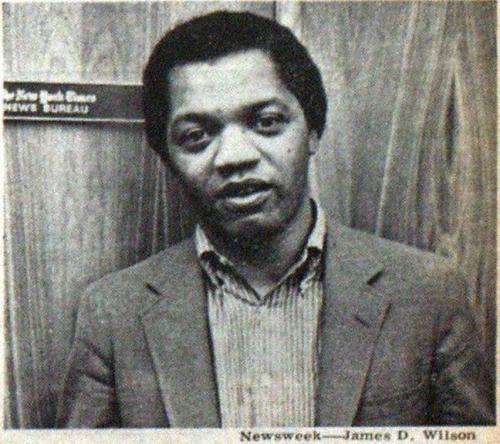 The late Glen Ford wrote that the case was emblematic of another time. “I felt privileged when I recently received an electronic copy of a February 1970 advertisement in the New York Amsterdam News, a Black newspaper that thankfully still exists,” Ford would write. The ad “was a ‘message to the Black community’ from 69 Black journalists in support of Black New York Times reporter Earl Caldwell,” wrote Ford, who was executive editor of BlackAgendaReport.com. “That was February 1970. It is almost impossible to imagine that so large and prominent a group of Black journalists would affirm their responsibility to the Black community today — or even acknowledge that such a responsibility exists.”
The late Glen Ford wrote that the case was emblematic of another time. “I felt privileged when I recently received an electronic copy of a February 1970 advertisement in the New York Amsterdam News, a Black newspaper that thankfully still exists,” Ford would write. The ad “was a ‘message to the Black community’ from 69 Black journalists in support of Black New York Times reporter Earl Caldwell,” wrote Ford, who was executive editor of BlackAgendaReport.com. “That was February 1970. It is almost impossible to imagine that so large and prominent a group of Black journalists would affirm their responsibility to the Black community today — or even acknowledge that such a responsibility exists.”
In 1968, Caldwell was the only reporter present when Martin Luther King Jr. was assassinated in Memphis. Caldwell has written about staying in the Lorraine Motel that night only a few doors from the room that Dr. King occupied. “The shot sounded like an explosion. . . . From the doorway, my view was of the thicket across the street and my attention was drawn to a man who was stooping low in the bushes. . . . Still I wonder about the man who climbed up from the bushes that night. The police, their reports, say the man did not exist. But I know better. I was there. And today, I’m like Andy Young. I do not believe that James Earl Ray alone was responsible for the assassination.”
In 1976, as another journalism pioneer, Dorothy Butler Gilliam, has described, “A group of already experienced journalists had heard that tired old excuse for not bringing more reporters of color into the daily news business — too often.
“So a group of us, led by Bob Maynard, Nancy Hicks Maynard and Earl Caldwell, and including Walter Stovall, Roy Aarons, Frank Sotomayor, Steve Montiel, John Dotson and me — became founders of what became the Institute for Journalism Education. We incorporated in 1977 and worked for the day editors could no longer say, “We couldn’t find anyone (non-white) qualified.
“We stimulated change by equipping young journalists with the skills they needed to report with accuracy and integrity, with good judgment to distinguish truth from lie, and influence and change the image of minority people in newspapers and newsrooms. We knew these values could help the entire news industry,” she continued.
At the Institute, which is based in Oakland, Calif., Caldwell acted on his longtime interest in compiling oral histories of Black journalists.
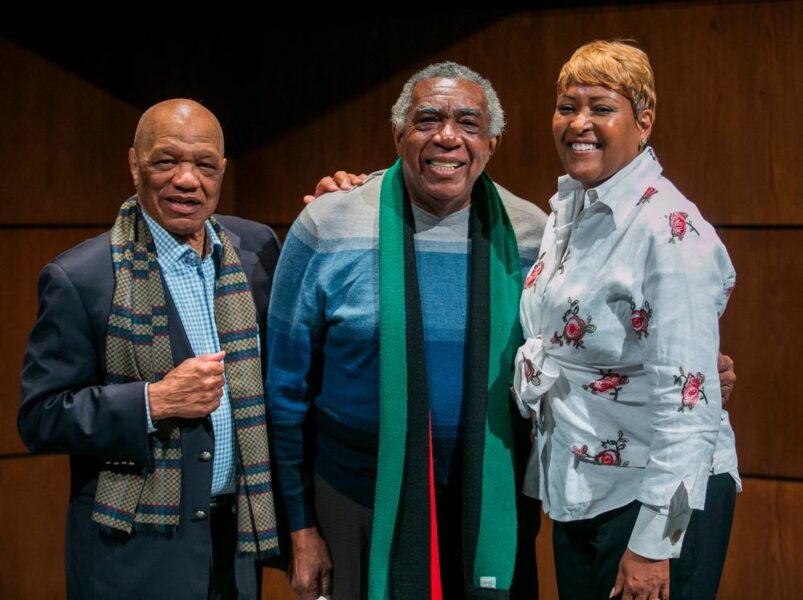
“In 1996, Caldwell began producing The Caldwell Journals (www.maynardije.org), an online serial that captured the stories of black journalists,” which led to an effort to preserve oral histories by black journalists, Angela Dodson and Daphne Muse would write in 2005 for Black Issues Book Review.
“‘ ‘We intend to make DVDs and create an anthology from the collection as well,’ notes Caldwell, with the kind of pride and passion that comes with shepherding projects like this into reality. ‘We’re also in the process of designing a site that will include clips from the oral histories and many of the documents and photographs and other interesting things we’ve gotten from the journalists in the project.’ “
Some of the tapes are housed at the African American Museum in Oakland and at Columbia University in New York. “The plan is to put it in many other places around the country in the black community,’” Dodson and Muse wrote.
Caldwell came to Hampton in 2003 as the new Scripps Howard School of Journalism and Communications, founded the previous year, was getting off the ground. He held the Scripps Howard Endowed Chair at the school.
As he brought in veteran journalists to speak to his classes, the idea developed into the “Caldwell Cafe,” a lecture series where others could hear these veterans as well.
Later, Hampton President William R. Harvey designated Caldwell a writer-in-residence, and Caldwell said he would stay at the university as long as Harvey was in the president’s chair. Harvey, president since 1978, is leaving on July 1.
As the 21st century proceeded, Caldwell said he found that more students became disinterested in the print medium and television, instead using Tik Tok and other new technology to report their stories, Caldwell said he was impressed by the results. After all, he says, it was an 18-year-old using a cell phone, Darnella Frazier, who shook the world with cell phone footage of George Floyd’s murder at the hands of Minneapolis police.
That’s what he wants to pursue in his next chapter: He said he wants to collect all of his oral histories and have them digitized, work on his unpublished memoir and work with — and even help guide — the journalism education that incorporates this new technology. His base of operations is still to be determined, Caldwell said.
- Dave Ress, Daily Press, Newport News, Va.: Hampton University names Lt. Gen. Williams, class of 1983, as next president (April 13)
Shots Kill Palestinian American Journalist
May 11, 2022
Al Jazeera Reporter Was on West Bank
Scant Coverage for Trapped African Miners
Nieman Announces Diverse Class for 2023
60 Ukrainians Apply for Hampton’s Free Summer
From May 9:
Dreams Validated at Pulitzers
Nominate a J-Educator Who Promotes Diversity
Home page photo: Shireen Abu Akleh (Credit: Al Jazeera)
Support Journal-ismsMujahed al-Saadi, who was covering Israel’s operation in Jenin, West Bank, on Wednesday alongside Shireen Abu Akleh, told CNN that Abu Akleh and other journalists made themselves known to Israeli forces before they were shot at. “I saw Shireen on the ground,” he said. “We tried to rescue Shireen and we couldn’t.” (Credit: Al Jazeera)
- May 13 update: Coffin carrying veteran journalist’s body shown falling as Israeli police beat mourners with batons (Atika Shubert and Abeer Salman, CNN)
Al Jazeera Reporter Was on West Bank
“The Arab world blamed IDF soldiers for the shooting of prominent Al Jazeera journalist Shireen Abu Akleh on Wednesday morning, which occurred during clashes that broke out in Jenin” on the West Bank, the Jerusalem Post reported on Wednesday. The reference is to Israeli Defense Forces.
“Arab leaders accused Israel and the IDF of systematic terrorism, premeditated murder and intentionally targeting free speech.”
Abu Akleh is described as a Palestinian American, born in Jerusalem. She graduated with a bachelor’s degree in journalism and media from Al Yarmouk University in Jordan, Al Jazeera said.
“She spent time in the United States when she was younger and obtained U.S. citizenship through family on her mother’s side, who lived in New Jersey, friends and colleagues said,” the New York Times reported.
On “Democracy Now!” Wednesday, Abu Akleh’s friend and colleague Dalia Hatuqa said, “Shireen and I met many years ago in D.C. when we both worked for Al Jazeera. She was stationed at the Ramallah bureau, but she was seconded to the D.C. bureau for a bit. So, we instantly became friends. . . .
“She gave voice to the struggles of Palestinians over a career spanning nearly three decades. Her killing is not an isolated incident. This has been happening for a long time: Israeli attacks against media workers, especially Palestinians, and the relative impunity under which they operate. . . .
“I personally have no faith in any probe that’s done by the Israelis. Many people have died, and no one has been held accountable for their death. And perhaps this will be a bit different because Shireen is an American citizen. But that leads us to the question: Why is being an American way more worthy of a probe than any other Palestinian, really?”
The International Federation of Journalists wrote that it “strongly condemned this latest targeted killing of a Palestinian media worker and has pledged to add the murder to the case lodged at the International Criminal Court (ICC) which details the systematic targeting of Palestinian journalists. . . .
“Al Jazeera producer, Ali Samoudi, was also shot in the back with a live bullet. Samoudi is reported to be in stable condition.”
CNN quoted journalist Mujahed al-Saadi, saying that Abu Akleh and other journalists made themselves known to Israeli forces in the area before they were shot at.
“ ‘I saw Shireen on the ground,’ he said. ‘We tried to rescue Shireen and we couldn’t.’
“The occupation targeted Shireen while wearing a helmet, the injury was under the ear,” he added. “Shireen fell while she was wearing press (gear) and even with that the people who tried to save her were shot at, the targeting was clear against Shireen and against us as journalistic teams.”
The Associated Press noted: “During last year’s war between Israel and Gaza’s militant Hamas rulers, an Israeli airstrike destroyed the building in Gaza City housing the offices of The Associated Press and Al Jazeera. Residents were warned to evacuate and no one was hurt in the strike. Israel said Hamas was using the building as a command center but has provided no evidence.”
- Arab and Middle Eastern Journalists Association: AMEJA mourns the loss of Shireen Abu Akleh and demands a transparent and independent investigation into the actions that led to her death. (Twitter, May 11)
In Burkina Faso, rescuers continue to pump water in the hope of finding the eight miners trapped in a zinc mine for more than three weeks. (Credit: France 24/YouTube)
Scant Coverage for Trapped African Miners
In 2010, the world was riveted by the rescue of 33 miners from a collapsed mine in Chile. The men “became a symbol of hope and solidarity,” by one account.
A movie documented their experience.
One billion people watched the rescue on live television.
Today in the west African country of Burkina Faso, eight miners have been trapped since April 13 by the collapse of a zinc mine. Americans barely know about it.
” ‘We are hopeful, yet angry at the same time,‘ said Yakouba Bama, whose cousin Charles Bama is one six of Burkinabès missing, along with one worker from Tanzania and another from Zambia,” Nomsa Maseko reported Tuesday for the BBC.
“The case has caused outrage in Burkina Faso as rescue operations only got under way following protests and a sit-in at a government building at a nearby town five days after the floods.
” ‘We don’t know if there’s enough oxygen for them and no-one is supplying them with food,’ the cousin said about the family’s concerns.
“Brenda Mwamba, wife of trapped Zambian miner Nune Ndonji, told BBC Focus on Africa radio that communication about the rescue efforts had been appalling — and it had taken five days for the mine managers in Burkina Faso to contact her directly in Zambia about what was going on. . . .”
Mwamba also reported, “The Canadian owners of the mine – which is about 100km (60 miles) west of the capital, Ouagadougou — say search crews continue to work 24 hours a day.
“Specialised equipment has been brought in from Ghana and South Africa to speed up the rescue efforts at the mine that has a depth of 710m. . . .”
On Friday, K. Diallo, described as a Cairo-based journalist, tweeted, “For 20 days, 8 African miners have been stranded more than 500 meters deep in a zinc mine operated by a Canadian company in Burkina Faso. why on earth isn’t there more outrage on this? Or is Solidarity just a privilege that remains for those who live in the west and are white.”
- Faaiza Rashid, Amy C. Edmondson, and Herman B. Leonard, Harvard Business Review: Leadership Lessons from the- Chilean Mine Rescue
- Trevali Mining Corp.: Trevali Provides an Update on Search Efforts at Perkoa Mine
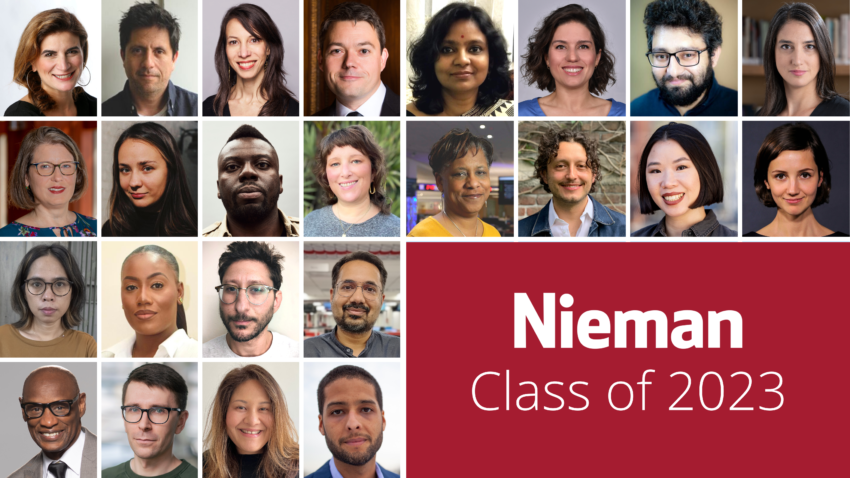
Nieman Announces Diverse Class for 2023
“The Nieman Foundation for Journalism has selected 24 journalists from around the world for a year of study at Harvard University,” the foundation announced Wednesday. “The new Nieman Fellows will work on projects about government suppression of journalism, controlling misinformation, climate change, migration and more.
“The Nieman class of 2023 includes the foundation’s first Cambodian journalist, as well as others who report on Ukraine, Russia, Afghanistan, Turkey, Myanmar, Bangladesh, India, Mexico, Nigeria and Hong Kong — places where press freedom is tightly restricted or under attack and in dire need of external support. . . .”
Among the class will be Danny Fenster, editor-at-large for Frontier Myanmar, an investigative news magazine, who was imprisoned by Myanmar’s junta for nearly six months in 2021 for his reporting on military-linked businesses. He plans to study how journalists in exile are using emerging digital tools to continue reporting on repressive regimes, as well as the impact of Western foreign policy responses to these governments on reporters’ ability to continue working.
Taras Prokopyshyn, publisher and CEO of The Ukrainians Media in Lviv, Ukraine, was also chosen. He is to study how to build sustainable independent media companies that provide high-quality journalism in developing countries.
60 Ukrainians Apply for Hampton’s Free Summer
Sixty Ukrainians have applied for Hampton University’s offer of free room, board and tuition for the summer session, in what the historically Black university calls “a humanitarian effort to help those college students and families affected by the current conflict in Ukraine,” Margaret Dismond Martin, chair of the Hampton University Ukrainian Initiative, told Journal-isms last week.
None have applied specifically to the Scripps Howard School of Journalism and Communications, she said. The deadline for applications is May 15. After the summer session, the students ” have the option to stay at Hampton at the regular tuition and fees rates,” according to the original announcement. The university said it was setting aside 50 to 100 seats.
To subscribe at no cost, please send an email to journal-isms+subscribe@groups.io and say who you are.
Facebook users: “Like” “Richard Prince’s Journal-isms” on Facebook.
Follow Richard Prince on Twitter @princeeditor
Richard Prince’s Journal-isms originates from Washington. It began in print before most of us knew what the internet was, and it would like to be referred to as a “column.” Any views expressed in the column are those of the person or organization quoted and not those of any other entity. Send tips, comments and concerns to Richard Prince at journal-isms+owner@
View previous columns (after Feb. 13, 2016).
View previous columns (before Feb. 13, 2016)
- Diversity’s Greatest Hits, 2018 (Jan. 4, 2019)
- Book Notes: Is Taking a Knee Really All That? (Dec. 20, 2018)
- Book Notes: Challenging ’45’ and Proudly Telling the Story (Dec. 18, 2018)
- Book Notes: Get Down With the Legends! (Dec. 11, 2018)
- Journalist Richard Prince w/Joe Madison (Sirius XM, April 18, 2018) (podcast)
- Richard Prince (journalist) (Wikipedia entry)
- February 2018 Podcast: Richard “Dick” Prince on the need for newsroom diversity (Gabriel Greschler, Student Press Law Center, Feb. 26, 2018)
- Diversity’s Greatest Hits, 2017 — Where Will They Take Us in the Year Ahead?
- Book Notes: Best Sellers, Uncovered Treasures, Overlooked History (Dec. 19, 2017)
- An advocate for diversity in the media is still pressing for representation, (Courtland Milloy, Washington Post, Nov. 28, 2017)
- Morgan Global Journalism Review: Journal-isms Journeys On (Aug. 31, 2017)
- Diversity’s Greatest Hits, 2016
- Book Notes: 16 Writers Dish About ‘Chelle,’ the First Lady
- Book Notes: From Coretta to Barack, and in Search of the Godfather
- Journal-isms’ Richard Prince Wants Your Ideas (FishbowlDC, Feb. 26, 2016)
- “JOURNAL-ISMS” IS LATEST TO BEAR BRUNT OF INDUSTRY’S ECONOMIC WOES (Feb. 19, 2016)
- Richard Prince with Charlayne Hunter-Gault, “PBS NewsHour,” “What stagnant diversity means for America’s newsrooms” (Dec. 15, 2015)
- Book Notes: Journalists Follow Their Passions
- Book Notes: Journalists Who Rocked Their World
- Book Notes: Hands Up! Read This!
- Book Notes: New Cosby Bio Looks Like a Best-Seller
- Journo-diversity advocate turns attention to Ezra Klein project (Erik Wemple, Washington Post, March 5, 2014)
When you shop @AmazonSmile, Amazon will make a donation to Journal-Isms Inc. https://t.co/OFkE3Gu0eK
— Richard Prince (@princeeditor) March 16, 2018

